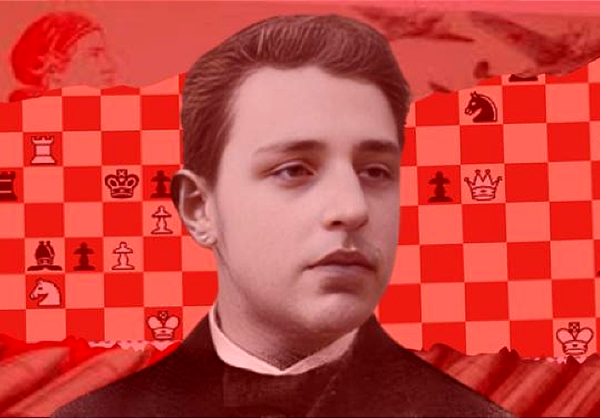Solving the mystery of the missing Jeopardy tapes

Claire McNear writes: "For decades, whispers have circulated among game show aficionados about a mysterious Jeopardy! contestant from 1986. She went by Barbara Lowe and won five games in a row, which at the time was the upper limit for returning champions. Later that year, when the show aired its Tournament of Champions contest with the best recent players, for which five-day champs automatically qualified, Lowe was nowhere to be found. Then, bizarrely, her episodes seemed to be wiped from the face of the earth. In the 1990s, Game Show Network re-aired Season 2 of Jeopardy!; eagle-eyedfans noticed that the five episodes featuring Lowe were unceremoniously skipped."
The race to save a historic 18th-century castle in Poland

Alex Webber writes: "For years left to rot, hopes that a stunning palace in the Opole region would regain its former splendour have been put on hold after legal issues were raised concerning its recent purchase. Regarded as one of the area’s finest architectural jewels, the palace in Kopice began life in the 18th century when the architect Hans Rudolph designed a classicist mansion to be built on the ancient seat of the van Borsnitz clan. A century later, the property was purchased by Count Hans Ulrich Schaffgotsch for his seventeen-year-old wife Joanna Gryzik von Schomberg-Godulla. In 1863, the couple commissioned Karol Lüdecke to oversee its complete reconstruction. Of its many standout features, it contained a spectacular rib-vaulted chapel, hand-carved furnishings and priceless works of art. Equally impressive was its sprawling 60-hectare garden."
Gigantic 'Earth Monster' finally heads home after mysterious US seizure

Mexico has recovered from the United States a giant stone statue known as an "Earth monster" that dates to the Olmec civilization before the Christian era, authorities said. The elaborately carved statue weighs more than a ton and is nearly six feet tall and five feet (1.5 meters) wide, the National Anthropology and History Institute said in a release. "Our Consul Jorge Islas in New York confirms to me that Mexico's most sought Olmec piece has been recovered and is about to return home, from where it never should have been taken," Foreign Minister Marcelo Ebrard tweeted. The Olmec civilization predated those of the Maya and Aztec cultures, and its artisans were known for creating colossal stone heads, statues and upright slabs. The institute said it believes the statue was created sometime between 800-400 BCE. Known as Monument 9 of Chalcatzingo and found in the central Mexican state of Morelos, the bas-relief piece is believed to represent an "Earth monster," a creature that often appears in Olmec iconography, INAH said."
German retiree discovers elusive math proof, but nobody notices

Natalie Wolchover in Wired: "As he was brushing his teeth on the morning of July 17, 2014, Thomas Royen, a little-known retired German statistician, suddenly lit upon the proof of a famous conjecture at the intersection of geometry, probability theory, and statistics that had eluded top experts for decades. Known as the Gaussian correlation inequality (GCI), the conjecture originated in the 1950s, was posed in its most elegant form in 1972 and has held mathematicians in its thrall ever since. “I know of people who worked on it for 40 years,” said Donald Richards, a statistician at Pennsylvania State University. “I myself worked on it for 30 years.” But even after Royen published his proof, most of those in the field of mathematics never heard about it.
The connection between ninjas in popular culture and Kabuki theater

From Kallie Szczepanski at ThoughtCo: "With the more elaborate stage sets, kabuki needed stagehands to do changes between scenes. The stagehands dressed all in black so that they would blend into the background, and the audience went along with the illusion. A brilliant playwright had the idea, however, of having a stagehand suddenly pull a dagger and stab one of the actors. He wasn't really a stagehand, after all - he was a ninja in disguise! The shock proved so effective that a number of kabuki plays incorporated the stagehand-as-ninja-assassin trick. Interestingly, this is where the popular culture idea that ninjas wore black, pajama-like garb comes from.
The woman who kept Goodnight Moon out of the New York Public Library

Dan Kois writes: "The New York Public Library released a list of the 10 most-checked-out books in the library’s history. The list is headed by a children’s book—Ezra Jack Keats’ masterpiece The Snowy Day—and includes five other kids’ books. The list also includes a surprising addendum: One of the most beloved children’s books of all time didn’t make the list because for 25 years it was essentially banned from the New York Public Library. Goodnight Moon, by Margaret Wise Brown, would have made the Top 10 list and might have topped it, the library notes, but for the fact that “influential New York Public Library children’s librarian Anne Carroll Moore disliked the story so much when it was published in 1947 that the Library didn’t carry it … until 1972.” Who was Anne Carroll Moore, and what was her problem with the great Goodnight Moon?"
Spinning handles and the "tennis racket" effect
In 1985 an astronaut noticed this physical behavior of a handle, that turned out to be the proof of a theorem: the tennis racket theorem (also dubbed the Dzhanibekov effect)
— Massimo (@Rainmaker1973) May 8, 2023
[read more:https://t.co/o1UHtQgCyt]
[video, HD: https://t.co/ra15T3YmW4]pic.twitter.com/0TcFdgzWEr



